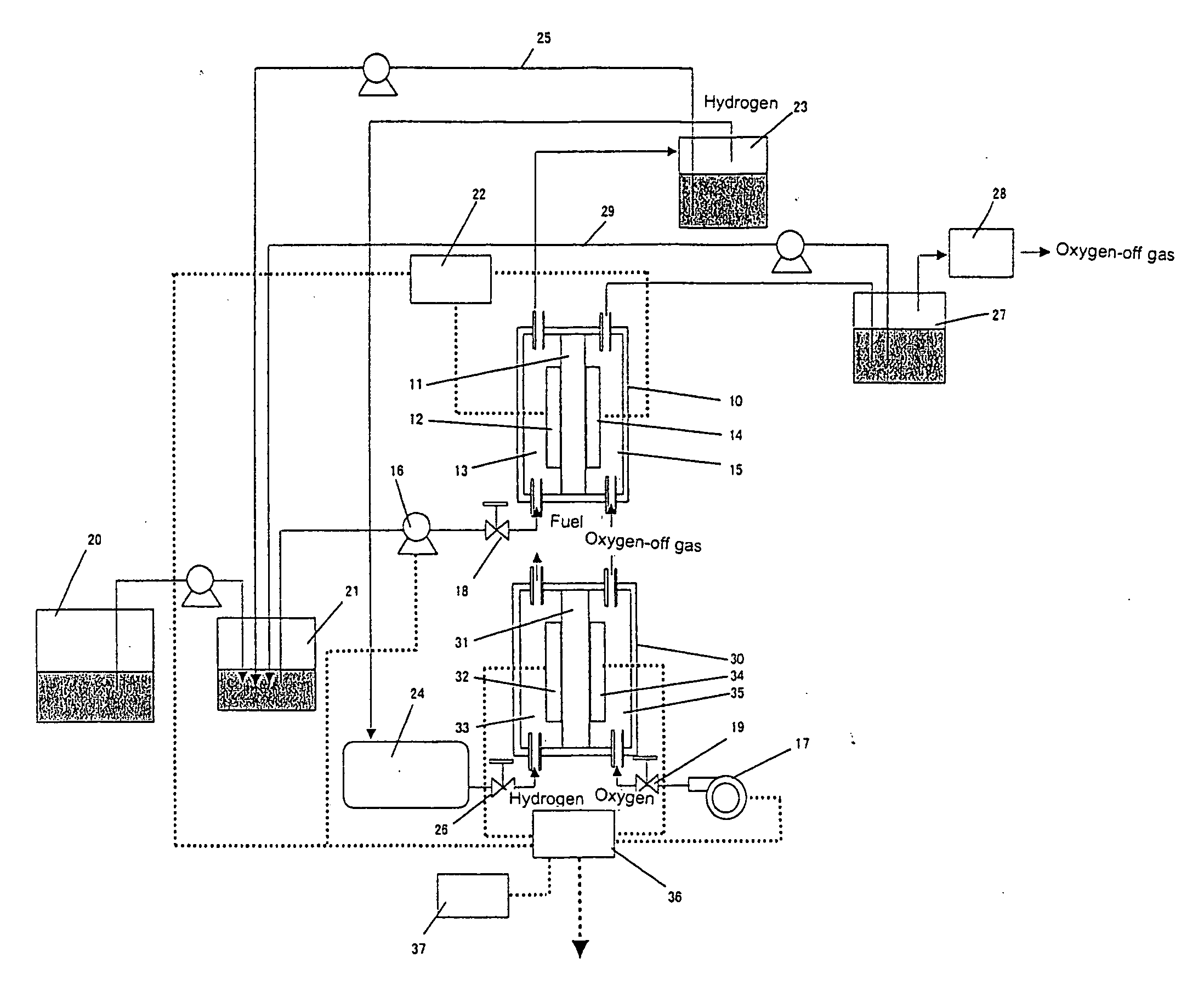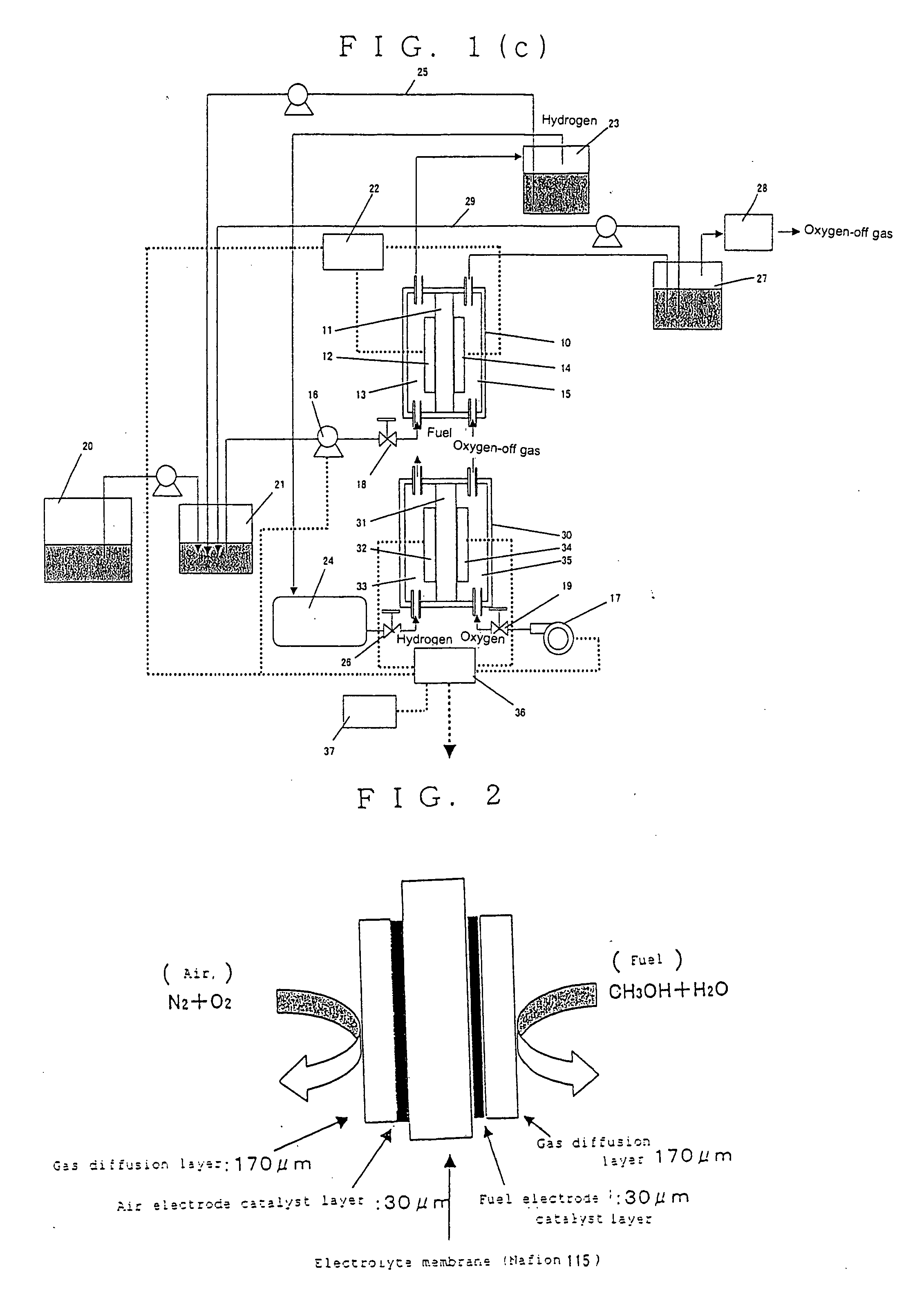Submarine Boat
a technology for submersible boats and submarines, which is applied in the field of deepwater submersible research boats, submersible vessels, submarines, etc., can solve the problems of increasing the size of the submarine boat, the difficulty of handling, and the difficulty of hydrogen supply, so as to reduce the time required for start and energy amount to raise the temperature of the reformer, the effect of reducing the size of the hydrogen generating devi
- Summary
- Abstract
- Description
- Claims
- Application Information
AI Technical Summary
Benefits of technology
Problems solved by technology
Method used
Image
Examples
example 1
[0256] Illustrative examples of generating hydrogen based on the hydrogen generating device loaded on the submarine boat (open-circuit condition) as defined by Claim 2 will be presented below.
HYDROGEN GENERATING EXAMPLE 1-1
[0257] Hydrogen generating cells described in Example 1 (generating examples 1-1 to 1-10) have the same structure as that of representative DMFCs.
[0258] The structure of the hydrogen generating cell is outlined in FIG. 2.
[0259] The electrolyte membrane consists of a proton conducting electrolyte membrane provided by Dupont (Nafion 115); and the air electrode is obtained by immersing carbon paper (Toray) in a solution where polytetrafluoroethylene is dispersed at 5%, and baking the paper at 360° c. to make it water-repellent, and coating, on one surface of the paper, air electrode catalyst paste comprised of air electrode catalyst (carbon-supported platinum, Tanaka Precious Metal), fine powder of PTFE, and 5% Nafion solution (Aldrich). Thus, the air electrode e...
example 2
[0313] Illustrative examples of the hydrogen generating device loaded on the submarine boat as defined by Claim 3 of the invention (discharging condition) will be presented below.
HYDROGEN GENERATING EXAMPLE 2-1
[0314] The structure of hydrogen generating cells described in Example 2 (illustrative examples 2-1 to 2-8) with means for withdrawing electric energy is outlined in FIG. 21.
[0315] The hydrogen generating cells of Example 2 are the same in structure as those of hydrogen generating example 1-1 except that the cell comprises a fuel electrode as a negative electrode and an air electrode as a positive electrode with means for withdrawing electric energy.
[0316] The hydrogen generating cell was placed in an electric furnace where hot air was circulated. The cell was operated while the temperature (operation temperature) being kept at 50° C. with the flow rate of air to the air electrode kept at 10 to 100 ml / min and the flow of 1M aqueous solution of methanol (fuel) to the fuel e...
example 3
[0366] Illustrative examples of the hydrogen generating device loaded on the submarine boat as defined by Claim 4 of the invention (charging condition) will be presented below.
HYDROGEN GENERATING EXAMPLE 3-1
[0367] The structure of hydrogen generating cells described in Example 3 (hydrogen generating examples 3-1 to 3-8) with means for providing electric energy from outside is outlined in FIG. 42.
[0368] The hydrogen generating cells are the same in structure as those of hydrogen generating example 1-1 except that the cell comprises a fuel electrode as cathode and an oxidizing electrode as anode with means for providing electric energy from outside.
[0369] The hydrogen generating cell was placed in an electric furnace where hot air was circulated. The cell was operated while the temperature (operation temperature) being kept at 50° C. with the flow of air to the air electrode kept at 10 to 80 ml / min and the flow of 1M aqueous solution of methanol (fuel) to the fuel electrode kept a...
PUM
 Login to View More
Login to View More Abstract
Description
Claims
Application Information
 Login to View More
Login to View More - R&D
- Intellectual Property
- Life Sciences
- Materials
- Tech Scout
- Unparalleled Data Quality
- Higher Quality Content
- 60% Fewer Hallucinations
Browse by: Latest US Patents, China's latest patents, Technical Efficacy Thesaurus, Application Domain, Technology Topic, Popular Technical Reports.
© 2025 PatSnap. All rights reserved.Legal|Privacy policy|Modern Slavery Act Transparency Statement|Sitemap|About US| Contact US: help@patsnap.com



